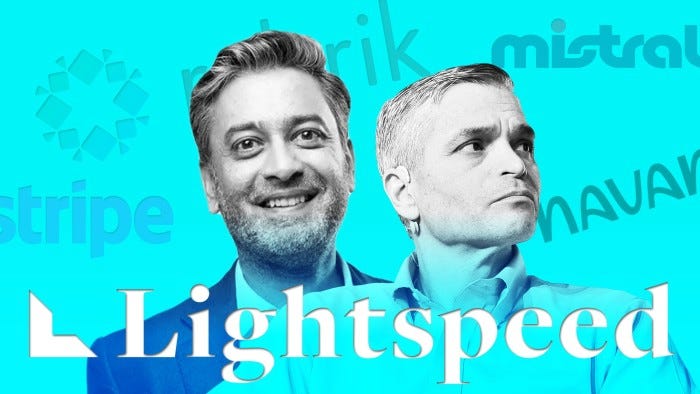The VC Is Dead? Long Live the RIA?
Why Venture Capital Firms Are Becoming Registered Investment Advisors (RIAs)
Lightspeed Venture Partners, a fixture of Silicon Valley’s venture elite, recently filed to become a Registered Investment Advisor (RIA)—a move first reported by Bloomberg (https://www.bloomberg.com/news/articles/2025-05-01/lightspeed-is-latest-firm-to-shift-away-from-classic-vc-model)—a move that lets it allocate over 20% of its funds into secondary markets and build more flexible investment vehicles. On the surface, it’s a regulatory formality. But it marks something deeper: a structural transition in how innovation is financed and who gets to participate in shaping it.
This isn’t just about Lightspeed. It’s about what’s becoming obsolete.
🪞 Cracks in the Classic Model
The traditional VC model—locked funds, time-boxed returns, expensive overhead—was built for a different era. When startups went public in five years and software was eating the world, it worked.
But today’s environment is slower, murkier, and more decentralized:
Liquidity timelines are unpredictable. IPOs are rare. Acquisitions are cautious. Returns, once the prize, now take patience.
Too much capital, too few great bets. Dry powder is everywhere. Founders are overwhelmed, not underfunded.
Founders are becoming allocators. They want aligned, informed, strategic money, not just a check and pressure to “scale or die.”
Returns are compressing. LPs are restless, wondering if the fees justify the performance.
This context makes Lightspeed’s shift more than clever—it’s adaptive. And survival in this new cycle favors those who evolve early.
What Is an RIA and Why VCs Are Becoming One
The RIA Shift: A Strategic Reboot
Becoming an RIA lets Lightspeed do what traditional VC firms cannot: move fast, invest in non-traditional assets, and serve capital in ways more aligned with today's investors.
It’s not just regulatory flexibility. It’s architectural. Here’s what it enables:
Secondary markets become first-class opportunities. Lightspeed has already deployed over $500M into secondaries (Stripe, Rippling, Anduril), offering liquidity and entry at more grounded valuations.
Investment personalization scales. RIAs can match capital to preference—risk-adjusted, tax-optimized, diversified—rather than forcing everyone into a 10-year box.
Platform-native investing becomes viable. Tools like Carta, AngelList, and Allocate are building a stack for RIAs to behave like micro-PE shops, syndicate leads, or solo capitalists—at scale.
What used to be “outside the model” is now the model.
The Future of Venture Capital: Unbundling the Traditional VC Model
We’re watching a great unbundling of the venture capital firm.
What a16z started by becoming an RIA in 2019 (to push into crypto and media), Lightspeed is now mainstreaming. General Catalyst is operating hospitals. Sequoia launched an evergreen fund. Thrive is betting $1B on AI-native startups through custom vehicles.
This is the beginning of an age where:
Traditional VC firms behave like diversified asset managers.
Angels and solo GPs operate like boutique VCs.
Wealth managers—RIAs—become the ultimate matchmakers of capital and innovation.
We’re leaving behind the “firm as gatekeeper” era and entering one where capital flows through modular, flexible, intent-driven networks.
My View: A Rewiring of Capital Markets
From where I sit, this isn’t just a shake-up in venture. It’s a rewiring of capital markets.
The entire system—from how innovation is funded to how risk is distributed—is moving away from institutional centralization toward a distributed, customizable future. Not decentralized in the crypto sense, but tailored, adaptive, and multi-nodal.
That means:
Founders will increasingly raise from hybrid pools—part RIA, part rolling fund, part angel syndicate.
Investors will mix and match exposure—SPVs, secondaries, long-hold equity, even equity-as-income assets.
“Fund structure” becomes an API, not a fixed product.
In this world, access and adaptability trump legacy reputation.
🧭 Actionable Advice for Startup Founders in the New Investment Landscape
For founders, this transition is an invitation, not a warning.
Don’t default to raising from a VC firm. Consider who controls the capital and what incentives drive them.
Understand investor architecture. Are they tied to a 10-year cycle or can they hold and support longer? That changes everything.
Think like an allocator yourself. Assemble your round as a portfolio—RIAs for stability, angels for insight, and platforms for distribution.
If yesterday’s playbook was about finding a lead VC, today’s is about curating your cap table like a high-performance team.
🧠 TL;DR
Lightspeed becoming an RIA isn’t an anomaly—it starts a larger pattern.
The VC model, built on fund cycles and fixed theses, is replaced by modular, adaptable capital stacks.
RIAs are emerging as powerful, trusted intermediaries between wealth and innovation.
For founders and LPs alike, this means more flexibility, but also more complexity.
The venture firm isn’t disappearing. But its monopoly on startup capital is over. What comes next is more open, more networked, and far more interesting.



